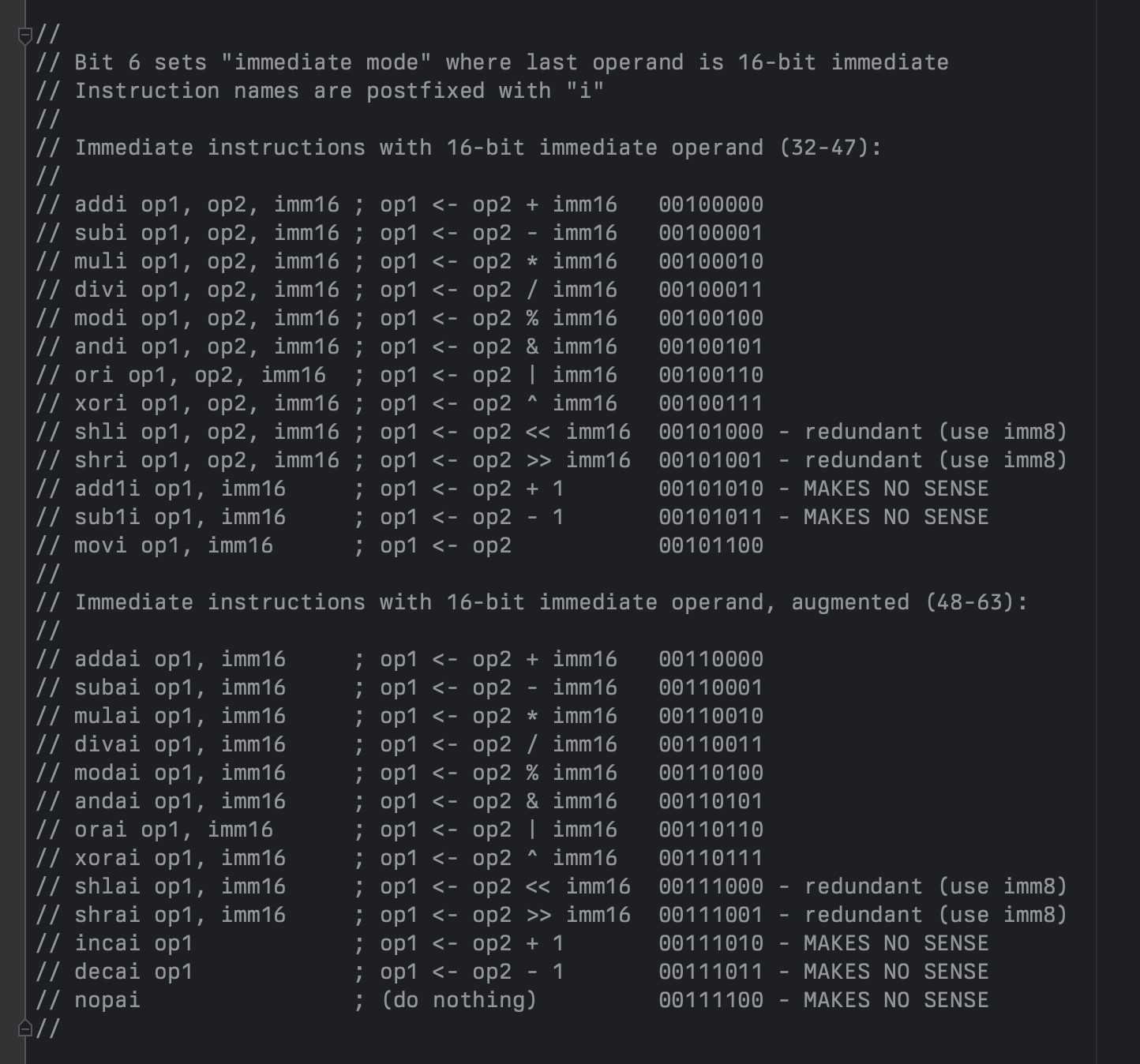What if we made a social network where instead of liking, blocking and muting, you would “hush” and “boost” posts? Hushing would decrease visibility to your followers. Boosting would increase it. Who’s with me?
“Can you explain this gap in your resume?” Yes, child; that was when I carried you
Good two hours reserved for today, let's continue with immediate instructions. Since we have augmented mode too, there's quite a bunch of these. Instructions that logically take only 1 argument don't make sense, such as INC/DEC, and some potential ones like NEG, NOT, CLR. Except for MOV.

Day 3 and can't decide whether to take a nap or get a coffee. Good 2 hours to go and some code needs written. Maybe should expand this poor opcode list today
![export const opcodes: { [key: number]: string } = {
0b00000000: "add", // add <dst> <src1> <src2> - dst <- src1 + src2
0b00000001: "sub", // sub <dst> <src1> <src2> - dst <- src1 - src2
0b11110000: "hlt", // hlt <?> <?> <?> - halt program execution
0b11110001: "hcf", // hcf <?> <?> <?> - halt and catch fire
}](https://cdn.bsky.app/img/feed_fullsize/plain/did:plc:ih3rt6r3sesh2flndp7oefwc/bafkreiaxbd544s5ivci5g2fpozpdlsi7pjhntbnttldzrrue5mewnnq734@jpeg)
Operands are now simply 8 bits and denote memory addresses 0x00 to 0xff. I have a slightly more complex design in mind but let's get some syntax defined first. This also details how to address lower and higher parts of registers:
![Syntax
[M] means the word at memory address M.
[M].b means the byte at memory address M. When read, it is sign-extended
to a word.
<reg> is equivalent to [addressof <reg>], where <reg> is one of registers
(a, b, c, d, x, y, i, j, p, q, sp, pc), and addressof <reg> is the memory
address of the register according to the table below.
<reg>.hi is equivalent to [address of <reg>].b
<reg>.lo is equivalent to [address of <reg> + 1].b
Table of registers and their addresses:
a: 0x0 a.hi: 0x0 a.lo: 0x1
b: 0x2 b.hi: 0x2 b.lo: 0x3
c: 0x4 c.hi: 0x4 c.lo: 0x5
d: 0x6 d.hi: 0x6 d.lo: 0x7
x: 0x8 x.hi: 0x8 x.lo: 0x9
y: 0xa y.hi: 0xa y.lo: 0xb
i: 0xc i.hi: 0xc i.lo: 0xd
j: 0xe j.hi: 0xe j.lo: 0xf
p: 0x10 p.hi: 0x10 p.lo: 0x11
q: 0x12 q.hi: 0x12 q.lo: 0x13
sp: 0x14 sp.hi: 0x14 sp.lo: 0x15
pc: 0x16 pc.hi: 0x16 pc.lo: 0x17
Finally:
<regi> is one of x, y, i, j
<rega> is one of p, q, sp, pc](https://cdn.bsky.app/img/feed_fullsize/plain/did:plc:ih3rt6r3sesh2flndp7oefwc/bafkreihgoilh3oo5wjtu76jpvjf6cyjdj42fqfy7bg6gxysyg7nwxhkcqi@jpeg)


